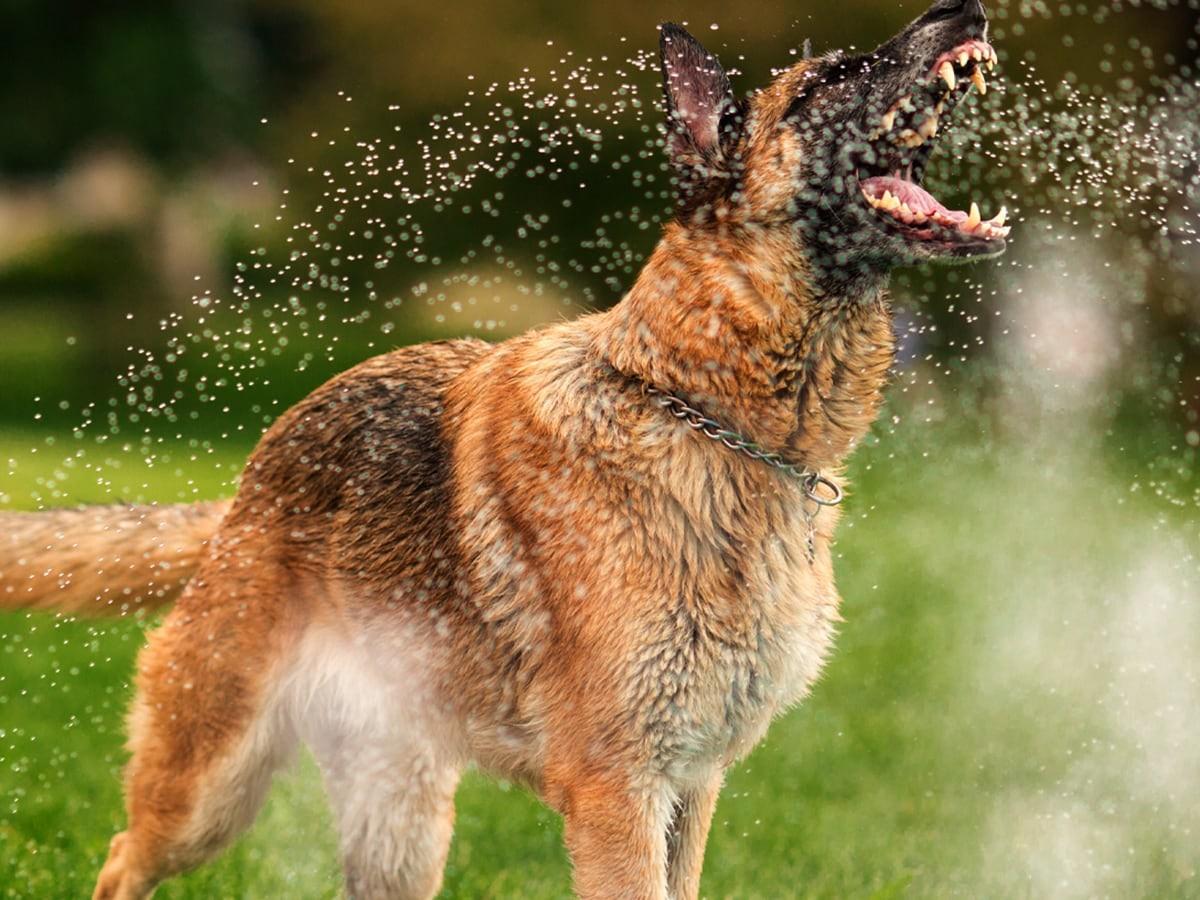“Take a chill pill”—it's something we often hear when someone’s angry or overheated. Sometimes, it literally means offering a cold drink to help someone cool down. Think about a dessert safari or a long beach day—we reach for a chilled beer as soon as possible.
Now imagine the same thing happening to a dog. After a long walk in the hot sun or a rigorous training session, the only difference is that your dog can’t open the fridge for a cold drink. But that doesn’t mean they don’t need to calm their nerves or cool their body temperature down.
How to Tell if a Dog is Feeling Hot?
Unlike humans, dogs don’t sweat. That means there aren’t always obvious signs when they’re overheating. We need to understand how dogs communicate discomfort. As a dog’s temperature rises, blood rushes to the surfaces of the tongue, gums, and membranes to help release excess heat.
Here are common signs your dog might be too hot:
Frantic panting
Extreme salivation
Bright red membranes
Difficulty in breathing
How How is Too Hot for a Dog to Stay Outside?
When dogs overheat, their body temperature can rise to 106°F or higher. At that point, they can no longer cool themselves effectively. They may gasp for air, and their mouth may turn grayish or purple. Overheating can also lead to dehydration, and their saliva may become thick. Vomiting and diarrhea can follow.
Eventually, dogs may become too weak to stand, experience seizures, fall into a coma, or even die. If your dog shows signs of overheating, even if they seem fine after cooling down, take them to the vet immediately. Internal organ damage may have already begun, and the risk of death remains even after symptoms subside.
How to Prevent Overheating in Dogs
Fresh water and shade: Make sure your dog always has access to clean water and a shaded area.
Shorter outdoor sessions: Instead of one long outing, break activities into shorter sessions during hot weather.
Cooling products: Use dog-safe cooling gear recommended by your vet.
Never leave your dog in a car: Even on mild days, a parked car can reach 130°F in minutes. A dog’s body heat adds to this, and the oxygen can be quickly depleted, especially in large breeds. Death can occur within 15 minutes, even with windows cracked.
Acclimatize gradually: Let your dog adjust slowly to warmer weather. Don’t overexert them on hot, humid days. Even water-loving or athletic dogs can overheat in warm conditions.
Keep your home cool: Make sure your AC is working on warm days. Power failures can be deadly, especially if no one is home.
Ensure proper ventilation: Like cars, avoid placing dogs in enclosed, poorly ventilated spaces (e.g., tents or vans).
Be cautious with dryers: Use care when using hair dryers or cage dryers.
Double coat ≠ double protection: While a dog’s coat provides insulation, thick or double coats—especially dark-colored ones—can trap heat. These dogs need extra care in hot weather.
Tip: Speak with your veterinarian about your dog’s breed and their sensitivity to heat.
How to Cool Down an Overheated Dog
Avoiding overheating is ideal, but sometimes it’s unavoidable. If your dog is overheated or showing symptoms, use these techniques for fast relief and to prevent further harm:
Move your dog to a shaded or covered area immediately.
Keep them calm and still—don’t encourage activity.
Place them on a cool, wet towel, cooling mat, or in front of a fan.
Offer small sips of cool water.
Pour cool (not ice-cold) water on their feet, ears, and head.
Gradually wet the rest of their body, but avoid overcooling to the point of shivering.
Fun fact: Most of these remedies are exactly what our moms would do when we were overheated—so maybe listen to mom more often!
How to Keep Pets Safe in the Summer
Avoid using ice or freezing water, as it can shock your dog’s system.
Be cautious when allowing your dog to swim, especially in warm water.
Watch for algae or bacteria in lakes and ponds—some can make dogs seriously ill.
Regularly groom your dog, especially their coat. A clean, knot-free coat helps keep body temperature regulated.
Maintain a healthy diet and exercise routine—a fit body is better equipped to handle stress.
In hot weather, consider using interactive toys with treats instead of long walks.
Dogs enjoy frozen treats, too! If they don’t love fruit flavors, try making ice cubes with plain water and a splash of beef bouillon.
Conclusion
Although it is completely normal for your dog to feel hot, overheating can be dangerous at times and even fatal. Keep looking for signs. Keep him/her healthy. Take precautions. And enjoy the company of your healthy dog.
Happy Mood and Health to your Doggo and lots of Love and Licks to you!

With 10 years of experience as a pet parent, I aim to empower pet owners with insights into pet insurance and maintaining their pet's well-being. I aspire to be a trusted source, combining knowledge with a commitment to the welfare of our beloved pets.












